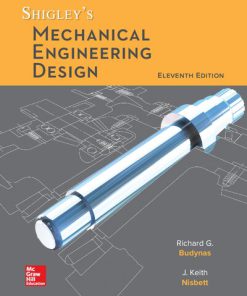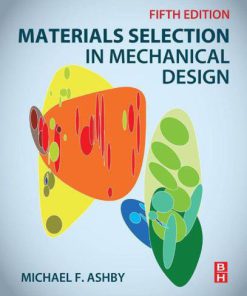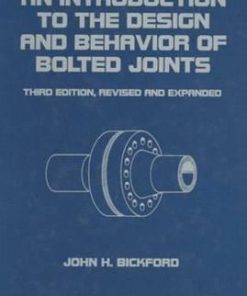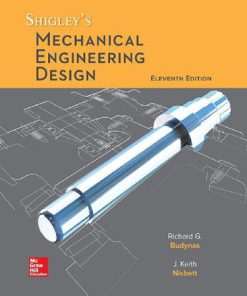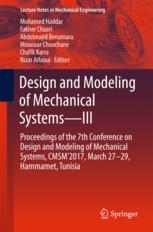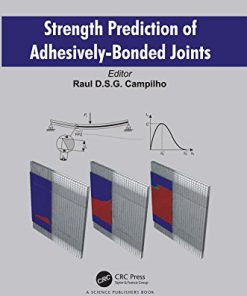Blake Design of Mechanical Joints 2nd Edition by Harold Josephs, Ronald Huston ISBN 9781498766319 1498766315
$50.00 Original price was: $50.00.$25.00Current price is: $25.00.
Blake Design of Mechanical Joints 2nd Edition by Harold Josephs, Ronald Huston – Ebook PDF Instant Download/Delivery: 9781498766319 ,1498766315
Full download Blake Design of Mechanical Joints 2nd Edition by Harold Josephs, Ronald Huston after payment
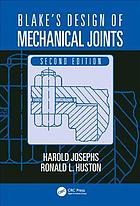
Product details:
ISBN 10: 1498766315
ISBN 13: 9781498766319
Author: Harold Josephs, Ronald Huston
Blake Design of Mechanical Joints 2nd Edition by Harold Josephs, Ronald Huston Table of contents:
Chapter 1 Introduction
1.1 Historical Review
1.2 An Overview of Mechanical Joints
References
Chapter 2 Basic Concepts of Fasteners
2.1 Introduction
2.1.1 Adhesive Bonding
2.1.2 Brazing and Soldering
2.1.3 Rivets
2.1.4 Threaded Fasteners
2.1.5 Welded Joints
2.2 Design with Rivets
2.3 Design with Bolts
2.4 Selection of Bolt Materials
2.5 Stress and Strain of Bolted Joints
2.6 Torque Equations and Friction
2.7 Strength and Design Criteria
2.8 Control of Torque and Preload
2.9 Selection of Working Loads
2.10 Current View of Bolt Preload
2.11 Summary of Design Considerations
References
Symbols
Chapter 3 Concepts of Strength and Failure
3.1 Preliminary Considerations
3.2 Effect of Lateral Forces
3.3 Statically Indeterminate Beams
3.4 Cross-Section Geometry
3.4.1 Example
3.4.2 Approach
3.5 Combined Stress Criteria
3.6 Response in Shear
3.7 Torsion
3.8 Deflection Analyses
3.9 Buckling of Columns and Plates
3.10 Bending of Plates
3.11 Design of Curved Elements
3.12 Strength and Stability of Vessels
3.13 Early Experience with Stress and Fracture
3.14 Griffith Theory of Fracture
3.15 Behavior of Cracks
3.16 Detection of Crack Size
3.17 Ductile to Brittle Transition
3.18 Limitations and Implications of Fracture Control
3.19 Summary
References
Symbols and Acronyms
Chapter 4 Quality Measurement and Statistics
4.1 Introduction
4.2 Theory of Measurements
4.3 Statistical Analysis
4.4 Known Normal Distribution
4.5 Distribution Not Known to Be Normal
4.6 t-Statistic or the Student’s Statistic
4.7 Hypothesis Testing
4.8 Design Studies
4.8.1 Design Study 4.1
4.8.1.1 Solution
4.8.2 Design Study 4.2
4.8.2.1 Solution
4.8.3 Design Study 4.3
4.8.4 Design Study 4.4
4.8.4.1 Solution
4.8.5 Design Study 4.5
4.8.5.1 Solution
4.8.6 Design Study 4.6
4.8.7 Design Study 4.7
4.8.8 Design Study 4.8
4.9 Hypothesis Testing Based on a Two-Population Distribution
4.9.1 Large Sample Sizes
4.9.2 Small Sample Sizes
4.10 Summary Table of Tests Concerning Means
4.11 Design Studies of Two Population Means
4.11.1 Design Study 4.9
4.11.2 Design Study 4.10
4.11.3 Design Study 4.11
4.11.4 Design Study 4.12
4.12 Testing Variances from One Population: Use of the Chi-Square (x[sup(2)]) Distribution
4.13 Testing Variances from Two Populations: Use of the F-Distribution
4.14 Design Studies of Variances
4.14.1 Design Study 4.13
4.14.2 Design Study 4.14
4.14.3 Design Study 4.15
4.14.4 Design Study 4.16
4.15 Control Charts
4.16 Design Study for Control Charts
4.16.1 Design Study 4.17
References
Symbols
Chapter 5 Riveted and Bolted Joints
5.1 Basic Formulas for Rivets
5.2 Formulas for Eccentric Shear
5.3 Performance of Riveted Joints
5.4 Rigid Bolted Connections
5.5 Gasket Effects
5.6 Stiffness of a Flange in Compression
5.7 Conventional Diagram for the Bolt Preload
5.8 Theories of Joint Preload
5.9 Evaluation of Spring Constants
5.10 Symmetrical Splice Connection
5.11 Slip Coefficients
5.12 Load Transfer between Bearing and Shear
5.13 Determination of the Net Area of a Plate Subjected to Tension
5.14 Plate Edge Effects
5.15 Allowable Shear in Spliced Connections
5.16 Fatigue and Shear Lag Effects
5.17 Eccentric Joints
5.18 Prediction of Shear Loads
5.19 Prying Action on Bolts
5.20 Control of Joint Separation
5.21 Fastening of Plastics
5.22 Summary
5.23 Design Analyses
References
Symbols
Chapter 6 Flanges and Stiffeners
6.1 Introduction
6.2 Gasket Effects
6.3 Tightness Criterion
6.4 Spacing of Bolts
6.5 Mechanics of Flange Rotation
6.6 Design of Straight Flanges
6.7 Design of Ribbed Flanges
6.8 Stiffeners
6.9 Compact Flanges
6.10 Summary
6.11 Design Analyses
References
Symbols
Chapter 7 Clamps and Pipe Joints
7.1 Introduction
7.2 Interfaces, or Shrink, Fits
7.3 Split Hub Criteria
7.4 The Single-Pin Clevis Joint
7.5 A Rigid Clamp Application
7.6 Design of a C-Clamp
7.7 Vessel and Pipe Supports
7.8 Tubular Joints
7.9 Summary
7.10 Design Analyses
References
Symbols
Chapter 8 Joint Connections: Pins, Couplings, and Other Joint Fittings
8.1 Introduction
8.2 Design of Cotter Pin Joints
8.3 Key Connections
8.4 Splines
8.5 Pipe Couplings
8.6 Abutment Failure
8.7 Eyebar or Knuckle Joints
8.8 Structural
8.9 Chain Drives and Coupling Links
8.10 Wire Rope Fittings
8.11 High-Pressure Threaded Configurations
8.12 Summary
8.13 Design Analyses
References
Symbols
Chapter 9 Design of Welded Joints
9.1 Introduction
9.2 Typical Welded Joints
9.3 Allowable Weld Stresses
9.4 Crack Initiation and Fatigue
9.5 Design Assumptions
9.6 Analysis of Fillet Welds
9.7 Weld Line Formulas for Design
9.8 Welded Lap Joints
9.9 Beam Seat Connections
9.10 Column Base Plate Design
9.11 Welded Joints in Plate Girders
9.12 Special Welded Joints
9.13 Summary
9.14 Design Analyses
References
Symbols
Chapter 10 Membrane Joints
10.1 Introduction
10.2 Vacuum Barrier Technology
10.3 Design of a Circular Membrane
10.4 Behavior of Mylar Barriers
10.5 Metallic Diaphragm Experiment
10.6 Plastic Correction in Diaphragm Design
10.7 Spherical Cap Barriers
10.8 Rolling Diaphragm Interface
10.9 Summary
10.10 Design Analyses
References
Symbols
Chapter 11 Design for Adhesion
11.1 Introduction
11.2 Characteristics of Solid Surfaces
11.3 The Mechanics of Adhesion
11.4 Setting and Flow of Adhesives
11.5 The Concept of Stress
11.6 Stresses in Butt Adhesive Joints
11.7 Design of Lap Joints
11.8 Design of Scarf Joints
11.9 Peeling
11.10 Special Applications
11.11 Materials
11.12 Guide for Designers
11.13 A Current View of Adhesive Technology
11.14 Summary
11.15 Design Analyses
References
Symbols
Glossary
Index
People also search for Blake Design of Mechanical Joints 2nd Edition by Harold Josephs, Ronald Huston:
design of mechanical joints alexander blake
design of mechanical joints pdf
design of mechanical joints alexander blake pdf
characteristic of mechanical style
Tags:
Harold Josephs,Ronald Huston,Blake Design,Mechanical Joints
You may also like…
Engineering
Romance - Other Romance Categories
Damaged Bride Blood Empire 1 1st Edition Blake York York Blake




